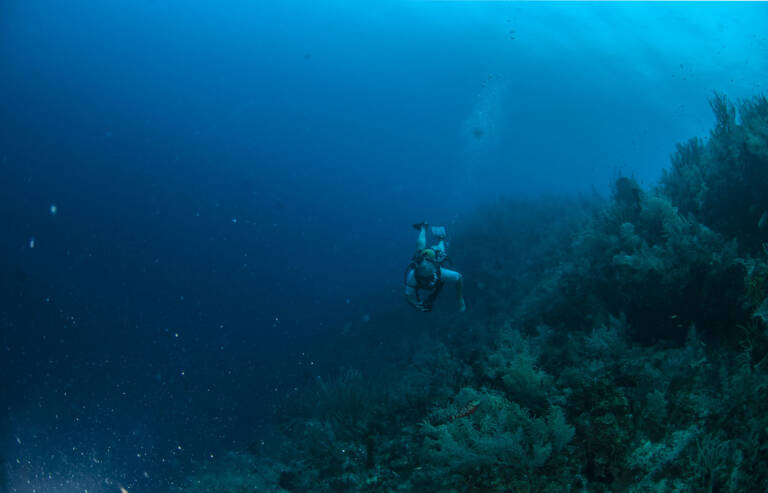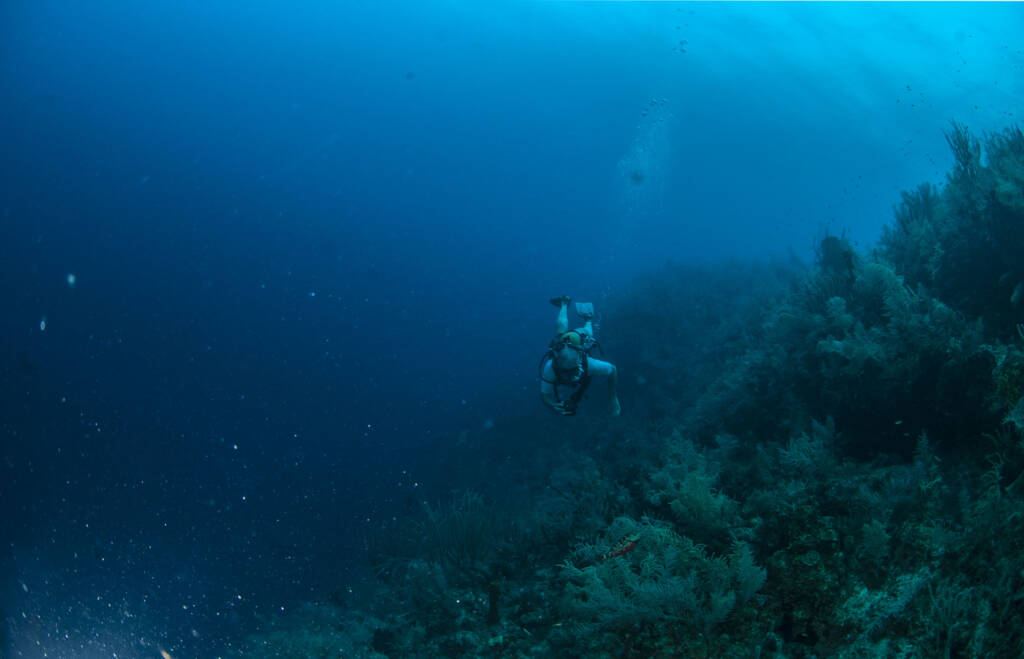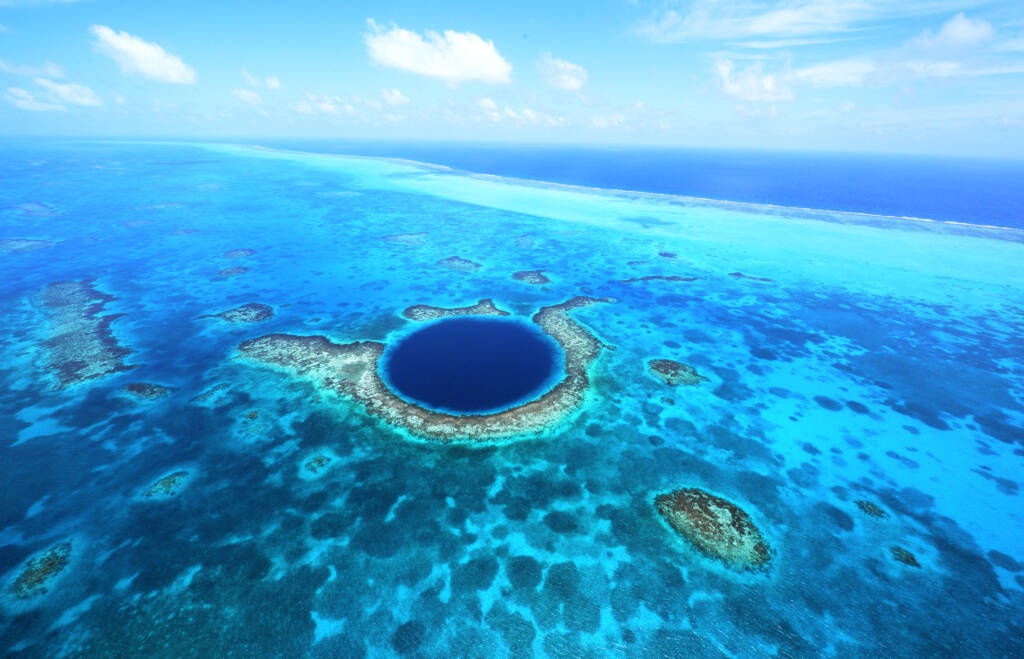At the top of almost every diver’s bucket list is to visit the Great Blue Hole in Belize. The ariel pictures of this iconic sinkhole are all over Instagram and dive blogs. There are a few tips to keep mind when diving the Blue Hole to make the most of your experience.
The Great Blue Hole is an extremely large dive site, spanning over 1,000 feet across and over 400 feet deep—much deeper than limits for open water divers or recreational diving. Since there’s no bottom to prevent a diver from exceeding safe depths, everyone diving the blue hole must experience—Advanced PADI Certification—and follow proper diving safety procedures. If you’re a novice diver, you might be more comfortable exploring one of the other beautiful sites around the Belize Barrier Reef.

The Belize Barrier Reef is known for its color and countless sea life that make the reef their home. The Great Blue Hole is a bit different and it’s important to know the beauty of the Blue Hole comes from the intricate rock formations, the vastness of the sinkhole, and the occasional appearance of Caribbean reef sharks.
Many dive operators that go to the Great Blue Hole work out of either Ambergris Caye or Caye Caulker—two islands in Belize. From Ambergris Caye, the trip is between 2 ½ and 3 hours while from Caye Caulker, it could take a bit longer. Water conditions are usually extremely rough, which can make for a bumpy and uncomfortable ride.
Now that Belize Dive Haven Resort is open, you have the option of staying at a luxury resort and being close to the Great Blue Hole. From our resort, you could be diving at the Blue Hole in just 30 minutes—or you could explore the great diving in the reefs just off our beach. Spend more time enjoying diving, not traveling to and from the mainland.


Belize Dive Haven Resort is located in the pristine Turneffe Atoll, just 30 kilometers offshore from Belize City. As part of the Belize Barrier Reef, the Atoll consists of creeks, lagoons, mangrove islands, and cayes. It is home to over 500 species of fish, 65 different species of stony corals as well as birds, turtles, manatees, and dolphins.